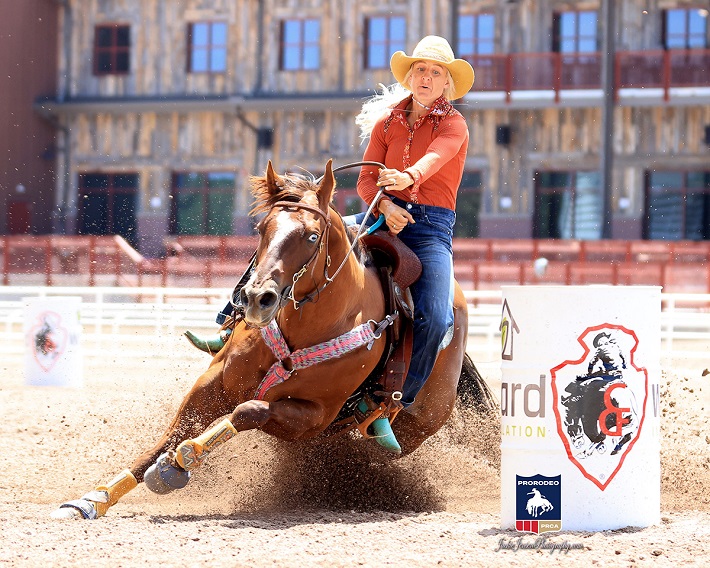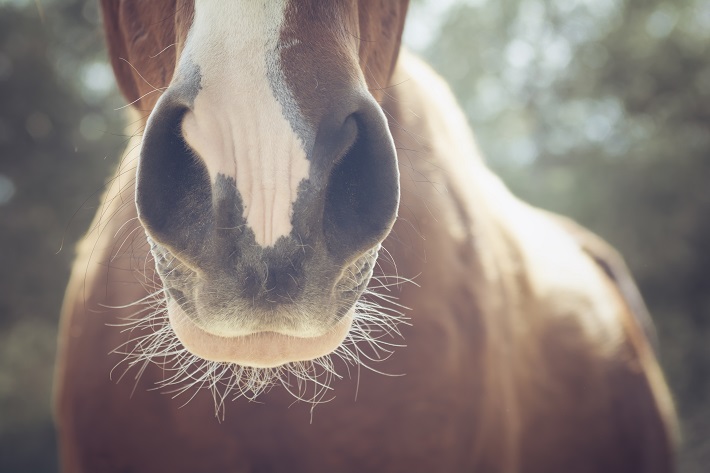Oxygen is essential for life and crucial in various bodily functions. In horses, oxygen is brought into the body through the respiratory system, beginning at the nostrils and ending in the lungs. The horse respiratory system can be divided into the upper and lower respiratory tracts.
Compared to humans and other mammals, horses move a large volume of air in and out of their lungs—the horse's respiratory system, specialized for high performance, exchanges oxygen for carbon dioxide. Any deviation from normal functioning can significantly impact a horse’s athletic performance.
Let’s understand the respiratory system in horses and the conditions that affect its health.
Respiratory System Structure

The respiratory tract starts at the nostrils and moves through the nasal passages, reaching the lungs. Horses are obligate nose breathers, meaning they cannot breathe through their mouths.
The trachea begins at the larynx (voice box), travels down the neck, and enters the thorax (chest). Inside the thorax, the trachea divides into two main bronchi, each leading to a lung.
The bronchi further divide into bronchioles, which end in alveoli—microscopic air sacs where oxygen is absorbed into the blood and carbon dioxide is expelled. This structure can be visualized as a bunch of grapes: the main stem represents the chief bronchi, the smaller stems represent bronchioles, and the grapes represent alveoli.
Functioning of the Equine Respiratory Tract
Understanding how the horse's respiratory system functions is crucial for maintaining a horse's health and performance. Here's a simplified overview of how this complex system works:
Overview of the Respiratory Pathway
- Air Entry: Air enters through the nostrils and the nasal passages. Horses are obligate nose breathers, which means they can only respire through their nostrils, not their mouths.
- Filtration: Small hair-like structures called cilia line the respiratory tract, helping to filter out dust and debris from the incoming air.
- Trachea and Bronchi: Air moves down the trachea (windpipe), then divides into two main bronchi, each leading to one lung.
- Bronchioles and Alveoli: Within the horse lungs, the bronchi further subdivide into smaller bronchioles, which end in tiny air sacs called alveoli.
Gas Exchange Process
- Oxygen Uptake: In the alveoli, air's oxygen diffuses across the air sacs' thin walls and enters the capillaries, binding to red blood cells.
- Carbon Dioxide Removal: Simultaneously, carbon dioxide, a waste product from the body's metabolism, diffuses from the blood into the alveoli to be exhaled.
Circulation of Oxygenated Blood
- Blood Circulation: The oxygen-rich blood is then transported from the lungs to the heart, which pumps it throughout the horse's body, supplying vital oxygen to tissues and organs.
Critical Points in Functioning
- Coordination: Numerous muscles, nerves, and cartilage structures must work precisely to ensure smooth airflow in and out of the lungs.
- High Efficiency: The system is highly efficient and capable of quickly moving large volumes of air, which is crucial for horses, especially those involved in strenuous activities like racing.
Importance of Proper Functioning
- Performance: Any disruption in the respiratory system can significantly impact a horse's performance. Respiratory health issues are a leading cause of poor performance in athletic horses.
- Health: Maintaining a healthy respiratory system in a horse is vital for the horse's well-being. It prevents issues that could lead to more severe health conditions.
Conditions Affecting the Equine Lungs or Respiratory Tract
Respiratory tract disorders and diseases can lead to significant health issues and loss of horse performance, regardless of age, breed, or discipline. These conditions can be broadly categorized as non-infectious and infectious diseases.
Non-Infectious Conditions
- Equine Asthma: This condition, formerly known as heaves, is a respiratory disease recognized by coughing, nasal discharge, and labored breathing. It is often triggered by dust, mold, and pollen allergens.
- Laryngeal Neuropathy: Also known as roaring, this condition involves the partial paralysis of the muscles controlling the larynx, leading to noisy breathing and reduced airflow during exercise.
Many non-infectious conditions have limited treatment options, with surgery often being the last resort. Managing the environment to reduce exposure to triggers and allergens can significantly help control these conditions.
Infectious Diseases
- Strangles: A highly contagious bacterial infection caused by Streptococcus equine, strangles lead to fever, nasal discharge, and abscesses in the lymph nodes.
- Viral Infections: Equine influenza and equine herpesvirus are common viral infections that affect the respiratory tract, causing symptoms like fever, cough, and nasal discharge.
- Bacterial Pneumonia: This condition involves inflammation of the lungs caused by a bacterial infection, which leads to fever, cough, and difficulty breathing.
Treatment
Treatment for infectious conditions varies based on the disease. It often includes antibiotics for bacterial infections and supportive care for viral infections. Prevention through vaccinations is crucial in protecting horses from many of these infectious diseases.

Ingredients that may Lend Support to promote normal respiratory function:
Horses challenged with respiratory health may benefit from the addition of ingredients such as MSM, Spirulina, Citrus Bioflavonoids, Probiotics, N- Acetyl L-Cysteine (NAC), Vitamins C, A and K to support a natural inflammatory response, respiratory health and immune function.
MSM: (Methylsulfonylmethane) Assists body to produce its own internal antioxidants which helps support natural inflammatory response by providing protection against oxidative stress.
Spirulina: A powerful antioxidant that helps support the immune system and plays a significant role in supporting a natural inflammatory response. Has been shown to help support concerns associated with inflammation of the nasal passage triggered by allergens.
Citrus Bioflavonoids: Heseperidin, rutin, naringin, quercetin, all bioflavanoids important for soft tissue health and maintaining normal blood pressure, which aids in overall lung health. Helps support immune system health and capillary strength.
N-Acetyl L-Cysteine: NAC helps replenish glutathione levels, supporting a healthy inflammatory response in lung and bronchial tissue.
Vitamin C (Ascorbic Acid) is an antioxidant that plays a role in helping combat harmful free radicals. Vitamin C is an antioxidant that helps protect the tissues of the body.
Vitamin K: supports vascular health, healthy bones, cognitive function, immune system and respiratory health.
Probiotics are live microorganisms (bacteria and yeast) that help promote healthy digestive function and support a healthy immune system. Often referred to as ‘good bugs’ they help break down ingredients/contents that the body normally can't, and help inhibit ‘bad bugs’ from growing.
Also Read: Supplements to Support the Senior Horse
Conclusion
Efficient respiratory tract functioning is vital for life and performance. Environmental factors (poorly ventilated stables, dusty hay, bedding) and supportive care play significant roles in respiratory health.
Providing sufficient clean drinking water will decrease the viscosity of respiratory secretions, facilitating their removal from the lower respiratory tract.
Take Action for Your Horse's Respiratory Health
At MedVetPharm, we understand the importance of a healthy respiratory system for your horse's well-being and performance.
Contact MedVetPharm today to learn about our products and how we can help you maintain your horse’s respiratory system.
Visit our website at MedVetPharm or call us at 833-809-4848 to schedule a consultation.


